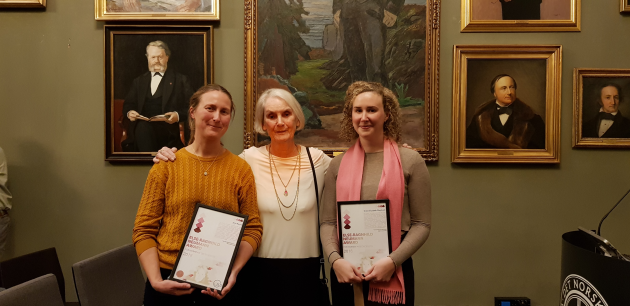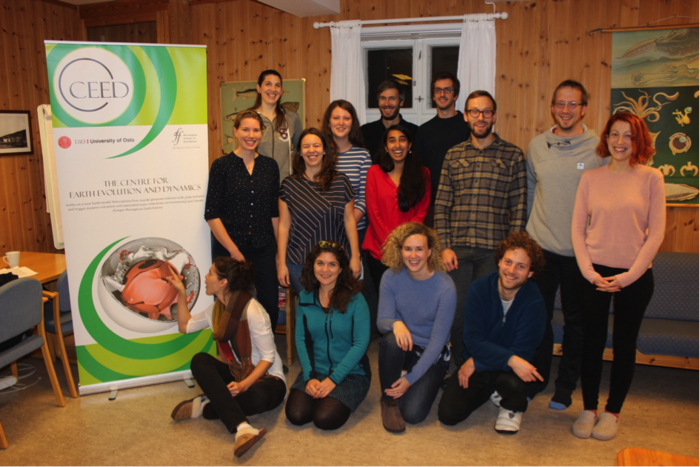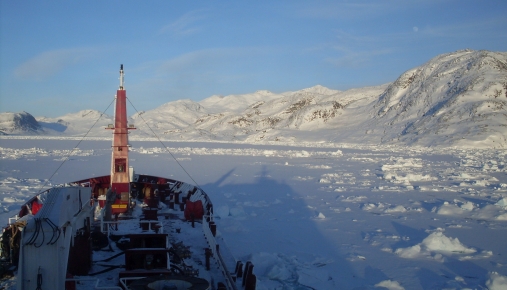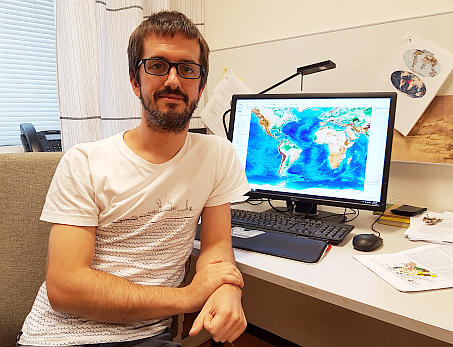2018
This past week, 14 international and interdisciplinary early career researchers from all over the world met in the fjord-side town of Drøbak, south of Oslo. The #YoungCEED18 workshop - the first of its kind under the “Young CEED” initiative - aimed for a fresh take on the enigmatic process of how new subduction zones form.
Volcanic activity primarily focuses at plate boundaries on Earth. But volcanoes can also form far away from plate boundaries due to plumes of hot material rising from the Earth’s deep interior. Eventually this material reaches the surface and breaks through the Earth’s crust to form a volcano – a so-called “hotspot”. Scientists now present a theory of how this type of hotspot activity can explain massive, past volcanic eruptions in Greenland and in the North Atlantic region.
European Geosciences Union: EGU recently announced who will receive awards and medals for 2019. Researcher Mathew Domeier at CEED and the Department of Geosciences will be honoured for his contributions. Domeier is awarded the Arne Richter Award for Outstanding Early Career Scientists for 2019.
Centre for Earth Evolution and Dynamics/CEED will award the Else-Ragnhild Neumann Award for Women in Geosciences. The award goes to a woman who through PhD or postdoctoral work has made a significant contribution to research in Geosciences.
The PhD course "Arctic tectonics, volcanism and climate" was held early August in the high north. The intensive week-long course held in Longyearbyen, Svalbard, brought together 15 students and 11 lecturers from 9 universities around the world. The course was funded through the DEEP Research School and the NOR-R-AM project, and UNIS.
Here are the three papers
2018 marks the tenth anniversary of the Kavli Prize, which recognizes scientists for major advances in three research areas: astrophysics, nanoscience, and neuroscience—the big, the small, and the complex.
Stephanie Werner at CEED and Department of Geosciences is now employed in a permanent position as a Professor at the Department of Geosciences, University of Oslo, Norway.
The CEED grandfather Kevin Charles Anthony Burke passed away on March 21, 2018. Kevin was one of the giants in geology and tectonics and his original and thought-provoking contributions were published steadily for more than six decades. Kevin was recognized with many honors, including the 2007 Geological Society of America's Penrose Medal and the 2014 European Geosciences Union Arthur Holmes medal, the highest Awards from both Societies.
The Earth is cooling. It is losing heat that is/was formed by the radioactive decay of isotopes, as well as from the heat that was formed during planetary accretion. Heat flow thus underpins all aspects of Earth’s evolution and processes including mantle convection and plate tectonics. Heat flow measurements are useful in that they provide a snapshot into the thermal state at a given location. Steady state surface heat flow (whether that be from the seafloor or on land) varies around the world, and depends on a number of factors including the tectonic setting.
The End-Triassic extinction is one of the largest mass extinctions in the history of Earth. It has been hypothesized that greenhouse gases released from volcanic activity of the Central Atlantic Magmatic Province (CAMP) triggered the extinction. New models in a recent study demonstrate that large-scale gas generation followed the sill emplacement of CAMP in sedimentary basins in northern Brazil.














